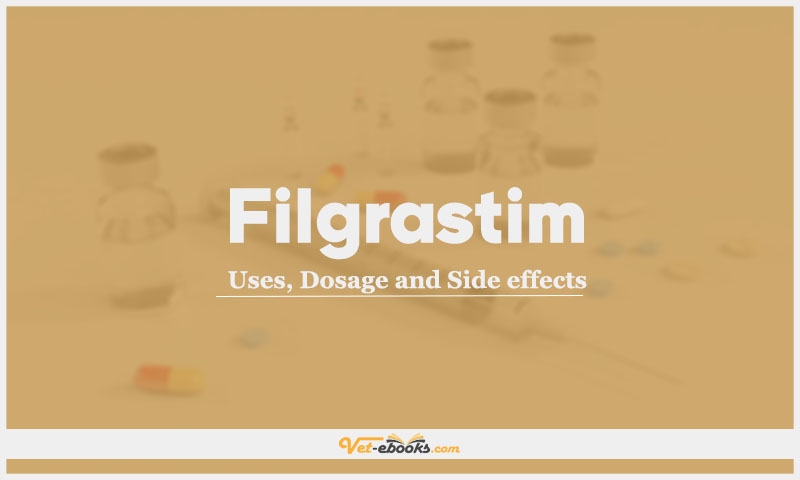Filgrastim: Uses, Dosage and Side Effects

Overview
- It activates the differentiation and proliferation of granulocyte progenitor cells and enhances granulopoiesis.
- Filgrastim is a recombinant human granulocyte colony-stimulating factor (rhG-CSF).
Uses of Filgrastim
- Managing febrile patients, particularly those receiving cytotoxic drugs with neutrophil counts <1 × 109/l.
- Also as an adjunct in treating neutropenia due to infections (e.g. canine ehrlichiosis, parvovirus, FeLV or FIV), bone marrow neoplasia or cyclic haemopoiesis in dogs.
Dose of Filgrastim in Dogs and Cats
Dogs, Cats:
- 100,000–500,000 IU (1–5 micrograms)/kg s.c. q24h for 3–5 days.
Drug Dosage Calculator
You Should Give:
Side Effects of Filgrastim in Dogs and Cats
- Normal dogs produce neutralizing antibodies to rhG-CSF.
- This limits repeated use and may result in neutropenia.
- This does not appear to be the case in canine chemotherapy patients.
- Reported adverse effects are bone pain at high doses and irritation at the injection site.
Contraindications of Filgrastim in Dogs and Cats
- Dogs or cats that have developed antibodies to G-CSF (with resultant neutropenia) should not receive it in the future.
Some Notes:
- Steroids and lithium may potentiate the release of neutrophils during G-CSF therapy.
- Concurrent administration with chemotherapy may increase the incidence of adverse effects.
- G-CSF should be given at least 24 hours after the last dose of chemotherapy, as the stimulatory effects of G-CSF on haemopoietic precursors render them more susceptible to chemotherapy.
Tip
Do You Want To Increase Your Veterinary Knowledge and Practical Skills?
You Can Now Browse and Download +3000 Books For Veterinary Professionals & Students Online.
Download Veterinary Books




















